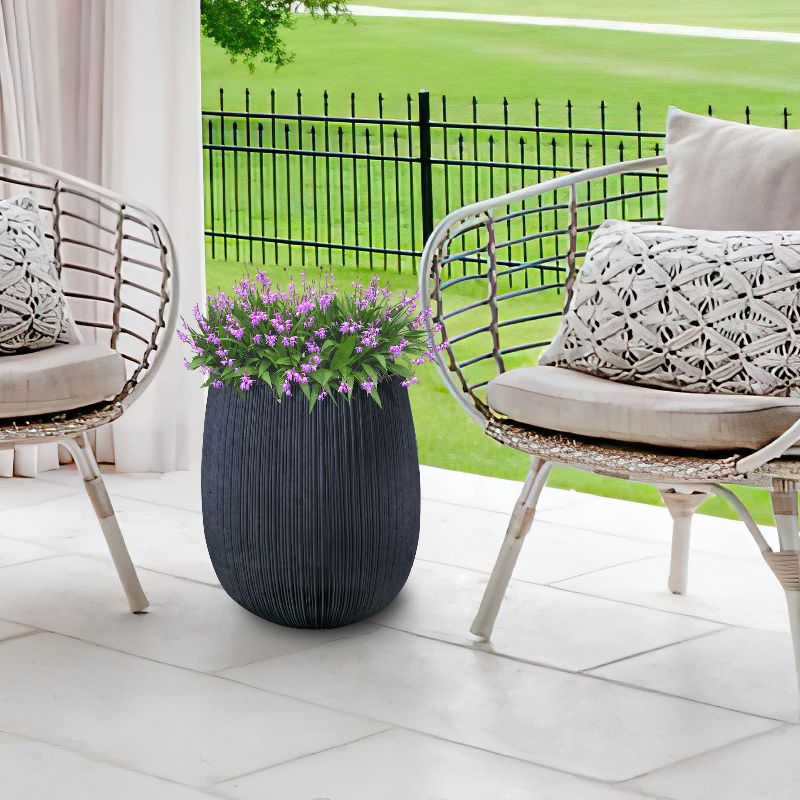Concrete planters are increasingly becoming a popular choice for home and commercial landscaping due to their durability, versatility, and aesthetic appeal. These planters are not only functional but also offer a contemporary edge to outdoor and indoor spaces. Whether you're a home gardener, a landscaper, or an urban designer, understanding the characteristics of concrete planters can help you make informed decisions about incorporating them into your space.
Exceptional Durability
One of the standout characteristics of concrete planters is their durability. Concrete is a robust material that can withstand extreme weather conditions, including heavy rain, snow, intense sunlight, and fluctuating temperatures. Unlike plastic or wooden planters, which may warp, crack, or degrade over time, concrete planters maintain their structural integrity for years. This durability makes them particularly suitable for outdoor use in areas exposed to the elements. They are also resistant to pests and fungi, which are common issues with wooden planters.
Weight and Stability
Concrete planters are significantly heavier than their counterparts made of plastic, fiberglass, or other lightweight materials. While this might seem like a drawback, the weight provides a distinct advantage: stability. Heavy concrete planters are less likely to tip over in strong winds or under the weight of large plants, making them ideal for tall or top-heavy plants.
Customizability
Modern concrete planters offer a high degree of customizability. Manufacturers and artisans can create planters in various shapes, sizes, and finishes to suit different design aesthetics. Whether you prefer minimalist rectangular shapes, intricate patterns, or organic curves, concrete can be molded to meet your vision.
Furthermore, concrete planters can be dyed or painted to match your preferred color scheme, giving you the flexibility to adapt them to indoor or outdoor decor. Textures can range from smooth and polished to rough and industrial, allowing you to tailor the planter to your design preferences.
Insulation Properties
Concrete has excellent thermal mass, which helps regulate soil temperature. This property is particularly beneficial for plants, as it shields their roots from extreme heat or cold. The insulation provided by concrete planters creates a stable environment for plant growth, making them suitable for regions with variable climates. However, it's worth noting that concrete can absorb moisture, which may require an added layer of waterproofing or lining to prevent damage to the planter and ensure optimal plant health.
Eco-Friendly Options
Concrete planters can be an eco-friendly choice, especially when made from recycled or sustainably sourced materials. Some manufacturers use reclaimed aggregates or reduce cement content to lower the environmental impact of production. Additionally, concrete planters are long-lasting, which reduces the need for frequent replacements and minimizes waste. Once their lifespan is over, concrete planters can often be repurposed or broken down and recycled, further enhancing their sustainability.
Round Woodware Textured Planter Set
Low Maintenance
Concrete planters require minimal maintenance, making them a practical choice for busy individuals or commercial spaces. They do not rust, decay, or require frequent repainting, unlike metal or wooden planters. Occasional cleaning with water and a mild detergent is typically sufficient to keep them looking fresh.
Sealing the surface can also help prevent staining or the growth of moss and algae, particularly if the planter is placed in a damp environment.
Aesthetic Versatility
One of the most attractive features of concrete planters is their aesthetic versatility. Their natural gray tone complements a wide range of design styles, from modern and industrial to rustic and traditional. This neutral base allows them to blend seamlessly with greenery and other elements in your garden or indoor space. For those looking to add a personal touch, concrete planters can be painted, etched, or adorned with decorative elements to make them unique.
Porosity and Breathability
Concrete is a porous material, which means it allows air and moisture to pass through. This characteristic promotes better drainage and aeration for plants, reducing the risk of waterlogging and root rot. Proper drainage is especially important for succulents and other plants that thrive in well-drained soil. However, excessive porosity may cause water to seep through the planter, which can lead to stains on surfaces or faster drying of soil. Using a sealant or adding a liner inside the planter can mitigate these issues.
Cost Considerations
Concrete planters are often more expensive upfront than plastic or terracotta alternatives, particularly if they are custom-made or feature intricate designs. However, their long lifespan and low maintenance requirements make them a cost-effective investment in the long run. Over time, the durability and aesthetic value of concrete planters outweigh their initial cost. For those on a tight budget, smaller or mass-produced concrete planters can provide the same benefits at a more affordable price.
Resistance to Fire
Concrete is a non-combustible material, making it a safe choice for fire-prone areas or spaces where fire pits and outdoor grills are used. This fire resistance adds an extra layer of safety and durability, particularly in outdoor applications.
In a word, concrete planters offer a combination of durability, aesthetic flexibility, and practicality that makes them a standout choice for both residential and commercial landscaping. Their ability to withstand harsh conditions, provide stable environments for plants, and adapt to various design preferences ensures they remain a favorite among gardeners and designers alike.
While their weight and potential cost may pose challenges, the long-term benefits of concrete planters often outweigh these drawbacks. Whether you’re looking to enhance your indoor decor or create a striking outdoor space, concrete planters provide a reliable and stylish solution.






